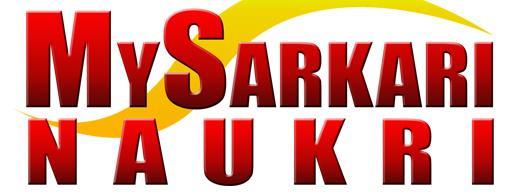Here, we have provided the detailed TSPSC Drug Inspector Syllabus. Candidates who have applied for the TSPSC Drug Inspector Job Openings should read this article for sure. Through our post, students can find out the Latest TSPSC Drug Inspector Exam Pattern along with the TSPSC Drug Inspector Exam Syllabus for both Paper 1 and Paper 2.
Contents
TSPSC Drug Inspector Syllabus
As the officials of the Telangana State Public Service Commission (TSPSC) are planning to conduct the Drugs Inspector Examination for all the eligible candidates, all the applied students should be prepared for the test.
TSPSC Drug Inspector Syllabus – Overview
| Organization Name | Telangana State Public Service Commission (TSPSC) |
|---|---|
| Post Name | Drugs Inspector |
| Category | Syllabus |
| Job Location | Telangana |
| Official Website | www.tspsc.gov.in |
TSPSC Drug Inspector Exam Pattern
The TSPSC officials reserve the right to conduct the TSPSC Drugs Inspector Examination either through a Computer Based Recruitment Test (CBRT) or Offline OMR Based Examination of Objective Type. By going through the test pattern, you guys can easily get an overview of the question paper.
| Papers | Names of the Subjects | Number of Questions | Total Marks | Exam Duration |
|---|---|---|---|---|
| Paper-I | General Studies and General Abilities | 150 | 150 | 150 Min |
| Paper-II | Related subjects | 150 | 300 | 150 Min |
| Total | 300 | 450 | 300 Min |
Language of the Exam
Paper-I: General Studies and General Abilities – Bilingual i.e., English and Telugu
Paper-II: Concerned Subject (Degree Level) – English Only
TSPSC Drugs Inspector Syllabus 2024 for Paper 1, 2
Applicants have to prepare with the TSPSC Drug Inspector Paper 1, and Paper 2 Syllabus topics to score more numbers on the test.
Paper 1 – General Studies & General Abilities
- Current Affairs – Regional, National, and International.
- International relations and events.
- General Science; India’s Achievements in Science and Technology
- Environmental issues; Disaster Management- Prevention and Mitigation Strategies.
- Economic and Social Development of India and Telangana.
- Physical, Social and Economic Geography of India.
- Physical, Social and Economic Geography and Demography of Telangana.
- Socio-economic, political, and cultural history of modern India with a special focus on Indian National Movement.
- Special focus on the socio-economic, political, and cultural history of Telangana Telangana state movement and formation of Telangana state.
- Constitution of India; Indian Political System; Governance and Public Policy.
- Social exclusion; Rights issues and policies like gender, caste, tribe, disability, etc.
- Society, Culture, Heritage, Arts, and Literature of Telangana.
- Telangana State Policies.
- Logical Reasoning; Analytical ability and data interpretation.
- Basic English. (10th Standard)
Paper 2 – Concerned Subject (Degree Level)
- Importance of various Pharmacopeias with special reference to Indian Pharmacopoea, British Pharmacopoea, Unites States Pharmacopoea, and International Pharmacopoea.
- Sources of drugs: Plant, Animal, Mineral, Synthetic and Biotechnological drugs.
- Preparation of Infusions, Decoctions, Tinctures, Solutions, and Soft and Dry extracts. Introduction and classification of various pharmaceutical dosage forms.
- Various parts of “Prescription” handling of prescriptions preliminary knowledge of important Latin terms useful in the interpretation of prescriptions and their translation into English.
- Posology: Calculation of dosage for infants, children adults, and elderly persons. Alcohol dilutions, Proof spirit, Isotonic solutions, Displacement value.
- A brief outline of communicable diseases, their causative agents, modes of transmission, and their prevention (Chicken pox, Tuberculosis, Malaria, Filaria, Leprosy, Sexually transmitted diseases, and AIDS).
- First Aid: Emergency treatment of shock, snake bites, burns, poisoning, and fractures.
- Classification of microbes their structure and identification. Bacterial growth, nutritional requirements, and staining.
- Contamination of pharmaceuticals in hospital and community environments by microbes.
- Sterilization: Definition, types, procedure, and testing.
- Sterilization of materials, Equipment, and utensils used in hospitals, centralized and decentralized sterilization. The drug distribution system in hospitals for outpatients, in- patients, and unit dose dispensing system.
- Hospital-acquired infections and infection control programs.
- Biomedical Waste Management.
- Ophthalmic preparations: formulations, methods of preparation, containers, and evaluation.
- Collection, processing, storage, and evaluation of blood, blood products, and plasma –substitutes
- Surgical products: Surgical cotton, surgical gauzes, bandages, sutures, ligatures, and catgut.
- Definition and types of incompatibilities (Physical Chemical and Therapeutic), correction of incompatibilities.
- Anatomy and physiology of the Cardiovascular system and related common disorders like hypertension, hypotension, angina, myocardial infarction, and congestive heart failure.
- Anatomy and physiology of the Digestive system and related disorders like peptic ulcers, constipation, diarrhoea, and jaundice, and Drugs acting on the Gastro-intestinal tract: antacids, antiulcer drugs, anti-emetics, laxatives, anti-diarrheal drugs, and probiotics.
- Functions of different parts of the Brain and spinal cord, Neurohumoral transmission in the central nervous system and autonomic nervous system.
- Drugs, acting on the cardiovascular system: Digitalis and other cardiac glycosides, anti-hypertensive drugs, anti-anginal and vasodilators including calcium channel antagonists.
- Drugs acting on central nervous systems: Sedatives, hypnotics, anti-anxiety agents, centrally acting muscle relaxants, anti-epileptics, analgesic, antipyretic and anti-inflammatory drugs.
- Antigens, antibodies, antigen-antibody reactions, hypersensitivity active and passive immunity, types of vaccines, Monoclonal antibodies, and their clinical applications.
- Historical development of antibiotics. Isolation of fermentation products with special reference to pencillins and tetracyclines.
- Carbohydrate metabolism: Glycolysis, glucogenesis, glucogenolysis, glycogen formation, pentose phosphate pathway, uronic acid pathway, abnormalities of carbohydrate metabolism.
- Introduction and principles of anti-microbial therapy Cotrimoxazole, fluoroquinolones, newer pencillins, broad spectrum antibiotics, cephalosporins, macrolides, anti-tubercular, anti-leprotic, antifungal and anti-viral drugs.
- Anti protozoan and anthelmintic drugs. Chemotherapy of neoplastic diseases.
- Salient features of Drugs and Cosmetics Act, 1940 and Rules, 1945 with special reference to Duties and powers of Inspectors. Composition and functions of statutory bodies.
- Narcotic Drugs and Psychotropic substances Act, 1985 with special reference to procurement and utilization of dosage forms.
- GMP and CGMP: Salient Features.
- Regulatory Aspects concerning Medical Devices.
